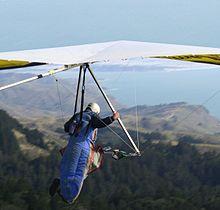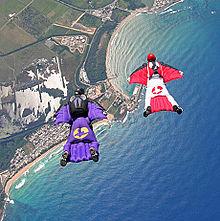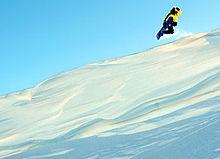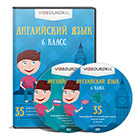Our project on the topic:
“ Sport”
Group 2С-2
Contents:
Sport is important in our life
Sport and games
Sport in Russia
Sport in Great Britain
Sport in the USA
Sport in Australia
The Olympic games
Kinds of Sport:
-Ice Hockey
- Football
- Basketball
- Tennis
- Cycling
- Windsurfing
-Skiing
- Ice Skaying
- Extreme Sports
- Presentation on the topic “ SPORT”
Tennis
We all need exercise. This is true for young people (in their teens) as well as for adults. Even if you don't plan make sports your main occupation. This is my opinion and I feel like it is true.
As long as I can remember myself I was always keen on tennis. I love this sportwith its old noble traditions, though myself never dreamed of becoming anything more than an amateur.
I watch closely all tennis competitions and championships. There are a lot of them, but my favourite championship is Wimbledon because old tennis traditions remains there as they are. Some of the most well-known Wimbledon champions are: John McEnroe, Boris Becker, Steffi Graf, Monica Seles. My dream is to get a chance to watch at least one of them playing.
And meantime I play tennis with my friends. It is also a great opportunity to socialize with people who have similar interest (as any sport I suppose).
Football
I am going to tell you about the history of football, one the most popular sport games all over the World.
Football is a popular sport played all over the world. It is the national sport of most European and Latin-American countries and of many other nations.
Millions of people in more than 140 countries play football. Football is played in the Olympics. Games similar to football were played in China as early as 400 ВС. Egyptians played a kind of football too. They played games involving the kicking of a ball. In about 200 AD the Romans played a game in which two teams tried to score by advancing a ball across a line on the field. The Romans passed the ball to one another but they never kicked it.
London children in about 1100 played a form of soccer in the streets. During the 1800's the people of England played a game similar to football. Many rules changed and each person interpreted the rules differently. Now, the sport has grown to a global scale, including men's and women's teams and the World Cup and European Championship competitions, which is played every four years. Also there is League of Champions and FIFA Cup competitions which take place every year in Europe.
Football originated with kicking games played by people in ancient times. The modern version came from England. Football was not that popular kind of game until the mid-1900s.
It started as a game involving kicking and handing, but late} this branched off into two separate sports: rugby and football, which is what the Americans call soccer. Around the late nineteenth century, English football began spreading over Europe. The United States was one of the last to implement football as a national sport. The Canadian Soccer Association was established in 1912 while the United States Soccer Federation was set up in 1913.
The first World Cup Championship was in Montevideo, Uruguay. Since then it has been played every four years except during World War II. The North American Soccer League (NASL) was formed in 1968. But it didn't gain popularity until the 1970's.
The rules of play for soccer are simple. The referee makes most of the decisions and attempts to encourage fair play. The game starts off with a kick off and the teams are allowed to pass, dribble, juggle, head, kick and shoot the ball to place it down the field, and (hopefully or eventually) into their opponent's goal.
If the ball is kicked off the field over the length of the field, the other team is given a throw-in, where the ball is thrown over the player's head, and back onto the field. If the ball is kicked over the goal or across the width of the field, either a corner kick results, realizing by the offensive team, where the ball is placed on the corner of the field and kicked into play or the defensive team is awarded a kick, where the ball is placed on the corner of the goal box, and kicked back into play. If a goal is scored, the ball is taken back to the centre of the field and the team, scored against, kicks off and keeps playing.
Sports and GamesPeople all over the world are very fond of sports and games. That is one thing in which people of every nationality and class are united.
The most popular outdoor winter sports are shooting, hunting, hockey and in the countries where the weather is frosty and there is much snow-skating, skiing and tobogganing. Some people greatly enjoy figure-skating and ski-jumping.
Summer affords excellent opportunities for swimming, boating, yachting, cycling, gliding and many other sports. Among outdoor games football takes the first place in public interest. This game is played in all the countries of the world. The other favourite games in different countries are golf, tennis, cricket, volleyball, basketball and so on. Badminton is also very popular.
All the year round many people indulge in boxing, wrestling, athletics, gymnastics and track and field events. A lot of girls and women go in for callisthenics.
Among indoor games the most popular are billiards, table tennis, draughts and some others, but the great international game is chess of course. The results of chess tournaments are studied and discussed by thousands of enthusiasts in different countries.
So we may say that sport is one of the things that makes all people kin.
Ice hockey
Ice hockey is one of the most action-paced of sports, demanding skillful skating, expert stick-handling, and masterly puck control.
The game developed in the frozen expanses of North America, and a hundred years ago became the national winter sport of Canada. It also became very popular in the northern states of the United States, and later spread to Europe, Japan, and even to Australia.
The game probably arose from boys playing on the ice. The kids probably fashioned pucks from frozen «horse apples» and adapted tree branches as hockey sticks, and played on cleared stretches of frozen lakes and rivers, and backyard rinks. Soon it was inevitable that teams began to play against each other and leagues were formed. The earliest mention of the team ice hockey game is a newspaper description of the game played at the Victoria Skating Rink in Montreal in 1875.
Originally the leagues and national competitions in Canada were amateur. In 1917 the first professional league was formed, the National Hockey League (or NHL), with four clubs — Montreal Canadians, Montreal Wanderers, Ottawa Senators, and Toronto Arenas. Later clubs were formed in American cities, and the NHL spread to the United States. In 1972 a rival professional organisation was formed, the World Hockey Association (or WHA).
In 1893 Lord Stanley, the Governor-General of Canada, presented a silver trophy, the Stanley Cup to the winners and play-offs for the Stanley Cup began, which then became the symbol of professional hockey supremacy.
Canadian-style ice hockey spread rapidly in Europe between the two World Wars. In the northern countries it had to compete against bandy.
Hockey is a team game played on an ice surface, known as a rink. Six players — a goalkeeper, two defence -men, and three forwards — constitute a side.
The game is divided into three periods, each lasting twenty minutes of actual playing time with -10-minute intervals. There are five face-off spots whereby the puck is dropped by the referee between the sticks of two players. After a goal is scored, the puck is brought back to center ice for another face-off.
The playing area (rink) is 188 to 200 feet long, and about 85 feet wide. The playing area is subdivided into three zones — defensive, neutral and attacking — by two blue lines (called off-side lines) teams defensive zone is that zone where the goal cage, which it is defending, is located. The zone at- the opposite end of the rink is known as the teams attacking zone.
The area between is known as the neutral zone and is divided at the centre by a red line. This line plays an important role in the game’s body checking regulations. Players are subject to a variety of penalties leading to their dismissal from the ice for two minutes or more, thus giving the other team a one-man advantage for the duration of the penalty or until a goal is scored.
ICE SKATING, a sport brought to North America from Europe in the 1740s, takes three basic forms. Figure skating, solo or in pairs, includes jumps and spins with varying degrees of difficulty, combined with movement and dance. Speed skating (and short-track speed skating) is racing on ice. Ice hockey is a team sport played on ice. In the mid-nineteenth century, skates were made of steel with straps and clamps to fasten them to shoes. Later in the century, the blade with the permanently attached shoe was developed by the American ballet dancer and vanguard figure skater Jackson Haines, who also introduced the elements of dance and music into the previously rigid form of figure skating.
British soldiers stationed in Canada introduced a game called "shinty," which combined field hockey with ice skates. The game was originally played with a ball, but in the 1860s a puck was introduced. Regulations and associations quickly developed to govern the popular and reckless sport, and in 1892 the Canadian governor general, Frederick Arthur, Lord Stanley of Preston, donated a cup to be given to the top Canadian team after an annual playoff. The Stanley Cup is still the object the National Hockey League (NHL) competes for in its championship games. Professional women's hockey debuted in the late 1990s.
The first recorded speed-skating race in England was in the Fens during 1814. World championships for speed skating (men only) began in the 1890s. In 1892, the world governing body of both speed and figure skating—The International Skating Union (ISU)—was founded. Six years later, the first ISU-sanctioned event was held. In 1914, pioneer figure skater George H. Browne organized the first International Figure Skating Championships of America under the sponsorship of the ISU of America. In 1921, the United States Figure Skating Association (USFSA) was formed to govern the sport and promote its national growth.
As an Olympic sport, figure skating (considered an indoor sport) debuted in the 1908 Olympic Summer Games in London, with competitions held for men, women, and pairs. It became a winter sport at the first-ever 1924 Winter Games in Chamonix, France. Originally, figure skating was executed in a stiff, formal style. Compulsory movements consisted of curves and turns, in or against the direction of movement, and executed to form several circle forms in a row. Although music, more fluid movements, pirouettes, spins, and ever-increasing athleticism were continually added to the performance roster, compulsory figures remained a part of Olympic competition until 1991. Ice hockey was included in the summer Olympics in 1920 and in the inaugural winter games of 1924, where men's speed skating was also an event. Women's speed-skating championships were first held in 1936 and included in the Olympics in 1960. Ice dancing, a figureskating discipline, became an Olympic event in 1976 and short-track speed skating in 1992.
American skaters have won more Olympic medals to date—forty by 2002—than competitors from any other country. The first American Olympic skating gold medal winner was Charles Jewtraw, who won the 500-meter speed-skating event in 1924. That same year, Beatrix Loughran took the silver medal for women's figure skating. The winning tradition continued through the turn of the twenty-first century, with Tara Lipinski winning the gold in 1998, and Sarah Hughes winning the gold in 2002. During the last decades of the twentieth centuries, many Olympic medallists such as Dorothy Hamill, Peggy Fleming, and Scott Hamilton enjoyed lasting popularity, and figure skating competitions became highly watched events.
SKIING. Petroglyphs and archaeological evidence suggest that skiing emerged at least 5,000 years ago in Finland, Norway, Sweden, and the northern reaches of Russia and China. The first skis were probably ten feet long and had only loose willow or leather toe straps, which made it nearly impossible for the skier to turn or jump while in motion. Early skiers—hunters, midwives, priests, and others who had to travel across deep winter snow—dragged a single long pole to slow themselves down.
The Norwegians developed modern skiing in the late eighteenth and early nineteenth centuries. By adding heel straps to skis, they were able to gain more control on descents and make quicker, tighter turns. These first rough bindings allowed skiers to use shorter skis and two poles instead of one. Around 1820, Norwegians began racing each other and staged the first ski-jumping competitions.
When Norwegians emigrated to the United States in the mid-1800s, they brought skiing with them. Many flocked to lumber and mining camps, where their ability to move quickly through the mountains in mid-winter proved to be an invaluable asset. In 1856, a Norwegian farmer named John "Snowshoe" Thompson responded to a plea from the U.S. postal service for someone to carry mail across California's Sierra Nevada range in mid-winter, a route that lay under as much as twenty feet of snow. Thompson made the ninety-mile trip across 10,000-foot passes in three days. He continued to deliver mailthis way until the transcontinental railroad was completed in 1869.
Thompson's legendary treks inspired many miners to take up ski racing as a diversion during long snowbound winters. They experimented with "dope"—early ski wax concocted from cedar oil, tar, beeswax, sperm, and other ingredients—to coax more speed out of their skis. In 1867, the town of La Porte, California, formed the nation's first ski club. Norwegian immigrants also introduced ski jumping to the United States in the 1880s, and in 1888, Ishpeming, Michigan, hosted the first formal skijumping tournament held in America. In 1904, jumpers and cross-country skiers founded the National Ski Association, which now encompasses all aspects of the sport.
The "Nordic" events of ski jumping and cross-country skiing dominated U.S. slopes until the 1920s. In that decade, "Alpine" or downhill skiing began to make inroads, fanned in part by skiing enthusiasm among Ivy League college students. Wealthy Americans often sent their sons to Europe between high school and college, and some returned with an interest in the downhill. Dartmouth College, where the first outings club was founded in 1909, hired a series of Bavarian ski coaches who encouraged this trend. In 1927, Dartmouth racers staged the first modern American downhill race on a carriage road on Mt. Moosilauke, New Hampshire.
Downhill skiing and technological change fed each other. The invention of the steel edge in 1928 made it easier to ski on hard snow, leading to better control and faster speeds. The development of the ski lift helped popularize "downhill-only" skiing, which broadened the sport's appeal. (The rope tow, introduced to the United States in Woodstock, Vermont, in 1934, was simple, quick, and cheap.) Since Alpine skiers no longer had to walk uphill, they could use stiffer boots and bindings that attached firmly to the heel. These, in turn, allowed for unprecedented control and made possible the parallel turn.
By the late 1920s, skiing's commercial possibilities were becoming apparent. The first ski shop opened in Boston in 1926, and an inn in Franconia, New Hampshire, organized the first ski school three years later. Railroads began to sponsor ski trains and used their vast publicity networks to promote the sport. In the 1930s, skiing spread swiftly across New England and upstate New York, and in 1932 Lake Placid, New York, hosted the Third Winter Olympics. In 1936, a new resort in Sun Valley, Idaho, introduced chair lifts, swimming pools, private cottages, and other glamorous touches. The brainchild of W. Averell Harriman, president of the Union Pacific Rail-road, Sun Valley foreshadowed the development of ski resorts across the country.
World War II further accelerated the popularization of Alpine skiing in the United States. The Tenth Mountain Division drafted many of the nation's best skiers and trained others for ski mountaineering in Europe. After the war, veterans of the unit joined the National Ski Patrol and established the nation's first major Alpine ski areas. Meanwhile, the division's surplus equipment was sold to the general public, giving newcomers an affordable way to take up the sport.
The surge in skiers on postwar slopes led inevitably to changes in technique. As large numbers of skiers began turning in the same spots, fields of "moguls" or snow bumps appeared, requiring tighter turns. The new skiers also demanded more amenities, and resort developers responded by installing high-capacity, high-speed lifts and mechanically grooming slopes. Some tried to lure intermediate skiers by cutting wide, gentle swaths through the trees from the top of the mountain to the bottom.
In the 1970s, such practices increasingly brought resort developers into head-on conflict with environmentalists. The environmental movement and the decade's fitness boom also led to the rediscovery of cross-country skiing. New equipment, which combined attributes of Alpine and Nordic gear, opened the new field of "telemark" or cross-country downhill skiing. Some skiers began hiring helicopters to drop them on otherwise inaccessible mountaintops.
In the postwar years, Americans began to challenge Europeans in international competitions. In 1948, Gretchen Fraser became the first American to win an Olympic gold medal in skiing, and in 1984, the United States collected an unprecedented three gold medals. When Squaw Valley, California, hosted the Winter Olympics in 1960, ski racing was televised live for the first time in the United States and it soon emerged as a popular spectator sport. Its popularity was propelled by gutsy and likeable stars such as Picabo Street, the freckle-faced racer who recovered from a crash and concussion in 1998 to win a gold medal in the downhill Super G.
Although Alpine and Nordic skiing remained popular in the 1980s and 1990s, they increasingly competed for space on the slopes with new variations like snow-boarding, mogul skiing, tree skiing, aerial freestyle, slope-style (riding over jumps, rails, and picnic tables), and half-pipe (in which skiers or snowboarders perform aerial acrobatics in a carved-out tube of snow and ice). U.S. skiers generally did well in these "extreme" events as they began to be added to the Olympics in the 1990s. In 1998, Jonny Moseley took gold in the freestyle mogul event, while Eric Bergoust flipped and twisted his way to a gold medal in the aerial freestyle. In 2002, the U.S. team captured silver in the men's and women's moguls and in the men's aerial freestyle.
Extreme sports
Extreme sports (also called action sports, aggro sports, and adventure sports) are a popular term for certain activities perceived as having a high level of inherent danger.These activities often involve speed, height, a high level of physical exertion, and highly specialized gear.
The definition of an extreme sport is not exact and the origin of the term is unclear, but it gained popularity in the 1990s when it was picked up by marketing companies to promote the X Games.
While use of the term "extreme sport" has spread far and wide to describe a multitude of different activities, exactly which sports are considered 'extreme' is debatable. There are however several characteristics common to most extreme sports. While not the exclusive domain of youth, extreme sports tend to have a younger-than-average target demographic. Extreme sports are rarely sanctioned by schools. Extreme sports tend to be more solitary than traditional sports (Rafting and paintballing are notable exception, as they are done in teams.) In addition, beginning extreme athletes tend to work on their craft without the guidance of a coach (though some may hire a coach later).
Activities categorized by media as extreme sports differ from traditional sports due to the higher number of inherently uncontrollable variables. These environmental variables are frequently weather and terrain related, including wind, snow, water and mountains. Because these natural phenomena cannot be controlled, they inevitably affect the outcome of the given activity or event.
In a traditional sporting event, athletes compete against each other under controlled circumstances. While it is possible to create a controlled sporting event such as X Games, there are environmental variables that cannot be held constant for all athletes. Examples include changing snow conditions for snowboarders, rock and ice quality for climbers, and wave height and shape for surfers.
Whilst traditional sporting judgment criteria may be adopted when assessing performance (distance, time, score, etc.), extreme sports performers are often evaluated on more subjective and aesthetic criteria. This results in a tendency to reject unified judging methods, with different sports employing their own ideals and indeed having the ability to evolve their assessment standards with new trends or developments in the sports.
While the exact definition and what is included as extreme sport is debatable, some attempted to make classification for extreme sports. In 2004, author Joe Tomlinson classified extreme sports into those that take place in air, land, and water.

![]()
Hang glider launching from Mount Tamalpais Some contend that the distinction between an extreme sport and a conventional one has as much to do with marketing as with the level of danger involved or the adrenaline generated. For example, rugby union is both dangerous and adrenaline-inducing but is not considered an extreme sport due to its traditional image, and because it does not involve high speed or an intention to perform stunts (the aesthetic criteria mentioned above) and also it does not have changing environmental variables for the athletes. Demolition derby racing, predominantly an adult sport, is not thought of as 'extreme' while BMX racing, a youth sport, is.
One common aspect of an extreme sport is a counter-cultural aura — a rejection of authority and of the status quo by disaffected youth. Some youth of Generation Y have seized upon activities which they can claim as their own, and have begun rejecting more traditional sports in increasing numbers.

![]()
Wingsuit flying is a recent activity.
Motivation 
![]()
Snowboarder drops off a cornice.
A feature of such activities in the view of some is their alleged capacity to induce an adrenaline rush in participants. However, the medical view is that the rush or high associated with the activity is not due to adrenaline being released as a response to fear, but due to increased levels of dopamine, endorphins and serotonin because of the high level of physical exertion. Furthermore, a recent study suggests that the link to adrenaline and 'true' extreme sports is tentative.The study defined 'true' extreme sports as a leisure or recreation activity where the most likely outcome of a mismanaged accident or mistake was death. This definition was designed to separate the marketing hype from the activity.
Eric Brymer also found that the potential of various extraordinary human experiences, many of which parallel those found in activities such as meditation, was an important part of the extreme sport experience. Those experience put the participants outside their comfort zone and are often done in conjunction with adventure travel.
Some of the sports have existed for decades and their proponents span generations, some going on to become well known personalities. Rock climbing and ice climbing have spawned publicly recognizable names such as Edmund Hillary, Chris Bonington, Wolfgang Güllich and more recently Joe Simpson. Another example is surfing, invented centuries ago by the inhabitants of Hawaii.
Many persons with various physical disabilities participate in extreme sports. Nonprofit organizations such as Adaptive Action Sports seek to increase awareness of the participation in action sports by members of the disabled community, as well as increase access to the adaptive technologies that make participation possible and to competitions such as The X Games.
Land windsurfing
Aerobatics
Aggressive inline
Auto racing
BMX
BASE jumping
Bungee jumping
Cave diving
Extreme ironing
Freeflying
Freestyle scootering
Freeskiing
Flowboarding
Hang gliding
Ice climbing
Kitesurfing
Longboarding
Motocross
Mountain biking
Mountaineering
Mountain boarding
Paragliding
Parkour
Rock climbing
Sandboarding
Scuba diving
Skateboarding
Skydiving
Skimboarding
Snowboarding
Snowmobile
Stand up paddle surfing
Surfing
Wakeboarding
Water ride
Waveski
Wingsuit flying
Xpogo
Cycling.
We often hear a saying «Don’t invent a bicycle» about something simple and known fora long time. Really, the bicycle is old enough — more than a hundred years of age. Its first prototype appeared in 1791 in France. In 1800 a Russian peasant Artamonov made an iron bicycle and travelled on it from Nizhni Tagil to Moscow.
First bicycles looked odd: a large (about 1.5 m high) front wheel with a cranked axle. The back wheel was usually smaller. Bicycles were made of iron and riding them was not comfortable because of shaking. They were even called «boneshakers». In 1868 rubber tyres were invented, first solid, then pneumatic. New types of bicycles appeared every year but only in 1885 people saw a model which looked like modern cycles. It had two almost equal wheels and a chain drive to the rear wheel. The frame of the cycle was diamond-shaped. This shape survived and became basic. The new machine looked more elegant than the old «spiders» which were soon abandoned. As time went by, new bicycles were invented – for two, three and even fifteen riders!
The first bicycle race was held in 1868 in Paris. But the sport became popular only several decades later because bicycles were expensive and only rich people could afford them. By the end of the 19th century many factories produced thousands of bicycles which became cheap, so many people could practice cycling and take part in various competitions. Cycling competitions are generally divided into road and track events. Both kinds are in the Olympic programme. Olympic road events include individual and team races.
Individual races’ distances are different, usually they do not exceed 200 kilometres. The winner is the first cyclist who passes over the finish line with his front wheel.
In the team road event the teams start the contest with 2-4 minutes interval, and that team wins whose members get the best sum of timings.
Track events take place on special cycling tracks which look like elongated stadiums with a sloping runway made of concrete, wood or plastics. Track events are very spectacular. The Olympic programme includes 1 km sprint races, 1 km heat or time trial, individual pursuit and team pursuit over 4 km.
Windsurfing
Windsurfing was invented in the mid-sixties by two southern Californian surfers, Hoyle Schweitzer and Jim Drake. Surfers need strong rolling waves, and hate days of calm sea. Schweitzer noticed that on days when waves were not high enough to surf, there was often a strong wind and he set about finding a way to use it. His first experiments Involved standing on his surfboard holding out a piece of sail cloth in his hands. Gradually he and Drake refined this idea into a basic design for a sailboard, similar to a surfboard, but holding a mast and a triangular sail which could be tilted and turned in any direction. The windsurfer operates a boom which controls the amount of wind in the sail, for speed and change of direction. Schweitzer immediately went into business designing and making sailboards and taking the idea abroad. By mid-seventies, the sport had spread to Holland, Germany and France.
Table tennis
Table tennis was first Invented in England in about 1880. At first the game had several strange names: Gossima. Whiff Whaff and Ping Pong. It wasn`t until 1926 that the International Table Tennis Association was formed with international championships and rules. Although the game was invented in England British players don`t have much chance in international championships. It`s the Chinese with their fantastic speed and power who win almost every title. Table tennis looks more like gymnastics when the Chinese start playing, with the ball flying over the net at speeds of over 150 kilometres per hour.
Basketball
The game of basketball has evolved a great deal throughout the years. Basketball was invented on December 21,1891. The inventor of the game was a Canadian clergyman, James Naismith.
The game of basketball was fashioned from fragments of other games, seeking to eliminate flaws of rugby, soccer.
Basketball was first played in the United States. In fact, the first game was played at one training school, now called Springfield College.
Basketball is a simple game. The equipment used in the game is also very simple. In addition to the field itself, all that is needed for a game is a ball. The very first ball that was used was a soccer ball until 1894 when an actual «basketball» was invented. The basketball ball was slightly smaller, about 30 inches in diameter. The first baskets that were used, were two peach baskets hung from the balcony of the gymnasium.
In 1893, the backboard was invented. The first backboard was constructed out of wire mesh, then wood and now it is made out of glass so the backboard does not interfere with the viewing of the game. Around that time, there was no name for this game.
By 1906, the peach baskets were replaced by metal baskets with holes in the bottom. This was better than in the early days, when a ladder was used to climb and fetch the ball out of the basket.Finally, in 1913 a hoop with a net was invented. In my opinion, the invention of the hoop and net was a major step in the developing of the game of basketball. Due to the free falling ball, the game’s tempo increased, which allowed the game of basketball to develop even more.
In 1921, one man named the game «basketball» and it has been called basketball ever since.
In the very beginning Naismith introduced thirteen original rules for the game of basketball, in which 12 out of the 13 original rules were still used up to 1934. The only rule, which changed, was that a player was now allowed to dribble a basketball. The rule of dribbling the basketball was first used in 1896 at a basketball game at Yale University. With the introduction of the 13 original rules, Naismith created four fundamental principals, which stayed in the game from 1891to 1937. These four fundamental principals stated, players with the ball must not make progress, the goal is above the head of the players, roughness is eliminated and a player may not receive the ball by use of contact.
Through the years of 1891 to the 1940′s there were many rule changes as well as addition of rules to the game of basketball. By 1898, basketball leagues were starting to form in the United States.In 1898, professional basketball was being played. The league was called the National Basketball League (NBL). The National Basketball League was made up of four teams like New York, Philadelphia, Brooklyn and New Jersey.
By 1932 basketball was officially gaining international status with the founding of the International Amateur Basketball Federation in Geneva, Switzerland. In 1946, the Basketball Association of America was formed but it did not go far well because it was competing against the National Basketball League. But in 1949, the Basketball Association of America and the National Basketball League joined together.
They changed their name to the National Basketball Association (NBA). Throughout the formation of the league there were many rules that were added to the game of basketball In 1930′s, Kenny Sailor invented the jump shot. Also in the 1940′s, Bob Kurland used block- shots. In 1952 the foul lane was widened and the three-second rule was put into affect, so centres could not station themselves in front of the basket all the time. During the 1950′s the National Basketball Association was on the rise. During the 1970′s and 198G’s the expansion of the NBA had gone wild. In the mid 1980′s and early 1990′s Michael Jordan, who was one of the greatest players in NBA history, dominated the game and took it to a wholly new level.
At this time, basketball was increasing in popularity. Nowadays it is played by 176 nations.
Sports and games
People all over the world are very fond of sports and games. That is one thing in which people of every nationality and class are united.
The most popular outdoor winter sports are shooting, hunting, hockey and in the countries where the weather is frosty and there is much snow-skating, skiing and tobogganing. Some people greatly enjoy figure-skating and ski-jumping.
Summer affords excellent opportunities for swimming, boating, yachting, cycling, gliding and many other sports. Among outdoor games football takes the first place in public interest. This game is played in all the countries of the world. The other favourite games in different countries are golf, tennis, cricket, volleyball, basketball and so on. Badminton is also very popular.
All the year round many people indulge in boxing, wrestling, athletics, gymnastics and track and field events. A lot of girls and women go in for callisthenics.
Among indoor games the most popular are billiards, table tennis, draughts and some others, but the great international game is chess of course. The results of chess tournaments are studied and discussed by thousands of enthusiasts in different countries.
So we may say that sport is one of the things that makes all people kin.
Sport in Great Britain
Most people in Great Britain are real sport-lovers. Even if they don't go in for sport, they like to talk about it. Perhaps, you didn't know, but many kinds of sport have taken the origin in Great Britain. Cricket, football, rugby, tennis, table tennis, badminton, squash, canoeing and snooker were invented in Britain.
Britain's national sport is football or soccer. It was played there as far back as medieval times. Nowadays it has become the most popular game all over the world. There is no national football team in Great Britain. England, Scotland, Wales and Northern Ireland have their separate football clubs, which compete in European and World Cup matches.
English football fans are fond of most exciting games which are held between teams from the same city. For example, between Manchester United and Manchester City, Arsenal and Chelsea from London.
There are plenty of amateur association football clubs. Many schools form their own football teams, offering students an opportunity of entering prestigious universities according to their sport achievements.
There is a certain type of football called rugby. The game is called so because it was originated at Rugby — a well-known English public school. As well as common football it is a game played by two teams of fifteen players each. The game takes place on a field 100 metres long and 80 metres wide. There are goal posts at both ends of the field. Rugby is played with an oval or egg-shaped ball which can be carried by hands and kicked. The ball is passed from hand to hand in order to be thrown across the goal line. It is a rather violent game, that is why the players must be big and strong. Another requirement for the players is to wear helmets, masks and chest and shoulder padding.
Cricket is a popular summer sport in Britain. There are many cricket clubs in the country. Cricket players wear a certain uniform — white boots, a white T-shirt and white trousers. One cricket game takes a terribly long time. There are two teams of 11 players each and test matches between national teams can last up to 5 days. The spectators have to be very patient. The game is played on a pitch with a wicket at each end. The rules of the game have changed over the years. It is a game which is associated with long sunny summer afternoons, the smell of new-mown grass and the sound of leather ball beating the willow cricket bat. Cricket is more popular among men, but it is also played by women and girls.
Tennis is another favourite sport of the Englishmen. People all over the world know Wimbledon which is the centre of lawn tennis. It is the oldest tennis tournament in the world considered by many people to be the most prestigious. It takes place over two weeks in late June and early July. Wimbledon is known for its traditions — strict white dress code for competitors, the absence of sponsor advertising around the courts and some others. Every tennis player dreams of taking part at this tournament.
Golf is a game of business community. In Great Britain it is very common to establish good business relations playing golf. The equipment for this game is quite expensive as well as the entrance to a prestigious golf club, so not everyone can afford it. Golf is a ball and golf stick game played on a natural field. In this game one has to knock a ball into a hole.
There are a lot of other popular sports in Great Britain, for example, horseracing, croquet, swimming, running, cycling and rowing.
Sport in the USA
Sport is an integral part of education in American schools and universities. Students usually learn two or more ball games, like football, rugby or basketball.
Then at high school the best players in every school form teams. Every team has its own symbol and a supporting group which is called cheerleaders. Girls who are cheerleaders usually wear clothes in the same colours as the students of their team. They learn different dances, jumps, acrobatic stunts and cheers. It takes a lot of time, practice and energy to be good at cheerleading. But today the world of cheerleaders no longer means sideline squads that exist just to support other teams. They are teams enjoying full rights, teams of the same importance as those football and basketball ones which they traditionally cheer. College and high school cheerleaders compete at national championships.
The most popular spectacular sports in the United States are football, baseball, basketball and hockey. As for the top mass sports, they are swimming, cycling and callisthenics.
American football derives from the English game — rugby. It isn't similar to soccer except some details, like the number of players and the size of the field. It is a far more violent game which requires great physical power and endurance.
Baseball is one of the most popular American team games. The first American baseball match was held in 1839 in New York. Baseball is a bat-and-ball game played by two teams of nine players each. The aim is to score runs by hitting a thrown ball with a bat and touching a series of four bases arranged at the corners of a ninety-foot square. American children of 8 years old can join certain leagues where they are taught by coaches. Every player and coach must wear a particular uniform: a shirt, pants, baseball cleats (specific shoes worn by the player for better traction with the earth) and a baseball cap designed to shade the eyes from the sun. Nowadays baseball caps are widespread in our everyday life. Catchers have to wear protective helmets with face masks and a special catcher's mitt.
Basketball is a game which was invented in America in 1891. It is a team sport in which two teams of five players each try to score points by throwing or "shooting" a ball through the top of a basketball hoop while following a set of rules. Basketball is one of the world's most widely viewed games nowadays. In 1946 the Basketball Association of America (BAA) was formed. Three years later the BAA merged with the National Basketball League to form the National Basketball Association (NBA). The NBA is famous for many outstanding players, including Larry Bird, Earvin Johnson and Michael Jordan.
A healthy way of life is in fashion now everywhere around the world. There are also many other sports that attract millions of the Americans. Such sports as swimming, track-and-field, skiing, skating, rowing and sailing enjoy great popularity in the USA.
Sport in Australia
A lot of Australians think you shouldn't worry too much about life.
But some things in life are really important, and to many Australian men, one of these things is sport. It's something they don't joke about. Sport matters,. In pubs, clubs and even at work you'll often find men who can talk about only one thing — sport.
Australians are lucky. They have a perfect climate, and an endless amount of land. They have wonderful waves for surfers on their beaches. They also have a strong wish to win. Put these together and you get a lot of good sportsmen and sportswomen. In fact, Australia has a very high number of world champions, in all kinds of sports, for a country of only 16 million people.
Around the country you'll find plenty of opportunities for golf, squash, tennis, trail riding (horse or motorcycle), fishing and so on. Surfing is almost a religion for many Australians who follow the waves around the country and there are a number of important surfing contests.
You'll find football of assorted types including the unique Australian Rules Football. Then, there's motor racing and motorcycle racing, horse racing, yacht racing, cricket matches and lots more.
The best thing, of course, is to play sport yourself. But if you can't, or you don't want to, then you can watch other people doing it. Every year, more than 100,000 people go to the final of Australian Rules Football. Crowds of more than 90,000 watch the big cricket matches against India, Pakistan, New Zealand and England.
There are sport happenings and holidays in Australia year round. Here are some of them.
In February there's Regatta Day with boat races and other water activities.
In June in Darwin the Beer Can Regatta takes place when there are boat races for boats constructed entirely out of beer cans — there are plenty of those in the world's beer drinking capital.
In August in the Northern Territory camel racing is on in Alice Springs, and then the Apex Rodeo is held, one of the biggest rodeo in Australia — the town fills up with cowboys.
Meanwhile in Sydney, Australian biggest race takes place with 25,000 competitors running the 14 km from Hyde Park to Bondi Beach in the city race.
In September attention is attached to Melbourne where Australian Football Cup takes place. Australian Football is played in Australia only. This is a game where two teams of 18 players. The players are-allowed to play with their legs and arms. The participation in the game demands great physical strength and very often injured players are carried away from the field or are replaced by other players. Grand Australian Football Cup is the biggest sports competition of the year.
On the first Tuesday of November the greatest horse race for Melbourne Cup is held. It is a public holiday in Victoria but the whole country shuts down for the three minutes or so which the race takes.
In December the Sydney-Hobart Yacht Race starts on the 26th, a fantastic sight as the yachts stream out of the harbour and head south.
Sport in Russia
Can you give a description to the word "sport"? Sport is an organized, competitive, entertaining and skilful activity, which requires following some certain rules. It is an integral part of our life. It is very popular among people of all nationalities and different age groups. Sport helps us to be in good form, to keep fit, it makes us more organized, disciplined and strong-willed.
Russia is a country famous for its outstanding brilliant sportsmen, especially in winter kinds of sport. Russian teams take worthy places at world championships in ice hockey as well as in figure skating.
Sport has become very popular among young generation, since from early childhood children are trained to sport life. Russian schools and universities offer students a wide choice of sporting activities. It can be tennis, table tennis, volleyball, basketball, swimming, football, judo, boxing and others. There are a lot of sport clubs in Russia specialized in various sports, which admit children and teenagers. Many members of such clubs take part in numerous competitions, struggle for medals.
Russian people like to do many different sports. In summer they usually swim a lot, roller-skate and ride a bicycle. All sports grounds are crowded with football lovers. But winter sports are closer to Russian people. As soon as the first snow falls, nearly all the livers of the country take their cross-country skis and lay out a ski trail.
Young sportsmen adore snowboarding and Alpine skiing. Ski resorts all around the country become more and more popular, especially among the youth. It's not enough for snowboarders just to be able to surf down the slide. It's a must for every respected boarder to show at least 5 different stunts, otherwise he or she would not be considered "cool". There is nothing more attractive for Russian people in winter than skiing for the whole day and then sitting with friends, chatting and drinking hot tea. The equipment for Alpine skiing and snowboarding is quite expensive, but young sportsmen use the equipment that they rent at the ski resorts.
You can't forget about another favourite winter sport of the Russians — it is skating and particularly figure skating. Nowadays many people attend outdoor or indoor skating-rinks where they can skate even in summer.
Russian people are ardent fans of extreme sports. For the last several years there occurred a new youth passion for elastic bungee jumping. You jump off a bridge or a building and fall down to the ground, but just before the moment you hit the water or the ground, an elastic rope pulls you back. There is a similar kind of sport called skysurfing. In this case, you jump out of an airplane, which is flying at the height of about 5 km, and fall down using a special board to "surf" the air.
There is a great number of fitness centres all over Russia. A year ticket to one of such centres may cost about 10.000 roubles.
Having your personal card, you have a possibility to use all offered facilities and attend all the classes included in the program. It may be everything from a simple gym equipped with a lot of up-to-date gym apparatus to some dancing classes or a swimming pool.
But still many people watch sport programmes on TV and are sure that they can be called sport-lovers. Some of them are keen on attending football and hockey matches at the stadium in order to feel a unique atmosphere. There is a huge amount of football fans in Russia. The sense of empathy is very common for Russian people. The team spirit lives in them, that is why they are always ready to support their compatriots at any championship. Although there are many good professionals in such famous football clubs as Zenit, Spartak, Rubin and Locomotive, their achievements are not very great, but even this fact can't influence the fans' attitude to their favourite teams.
The Olympic Games
The Olympic Games were originally an ancient Greek religious festival in honour of Zeus, held in Olympia near Mount Olympus, the mythical home of the gods. The initial date for the beginning of the Games was 776 В. С. They were held every four years, in the middle of the summer; the main condition of the festival was that there should be peace throughout Greece. The ceremonies included contests in oratory, poetry, music, and art, as well as in athletic skills like wrestling, throwing the javelin, and running.
The Olympic Games were an exclusively male festival, open to young men from all the Greek cities. Women were not allowed to compete in the Olympic Games, or even to attend and watch them. The victors were traditionally crowned with olive leaves rather than with gold medals. Their importance in Greek life was so great that the Olympiad, the four-year interval between Games, was a main unit of the Hellenic calendar. To be a victor in the classical Olympic Games was a great honour not only for the athlete but for his city.
The classical Games continued for over a thousand years. The Games were suppressed by the Roman Emperor Theodosius in A. D. 392.
With growth of interest in sport in the nineteenth century and the organization of annual and traditional sporting contests, especially between schools and universities, the idea arose of reviving the Olympic Games in the modern world. A Frenchman, Baron Pierre de Coubertin, was the enthusiast whose personal drive and initiative brought about the inauguration of the modern Olympic Games in 1896 with the participation of 311 athletes from thirteen countries, competing in nine sports.
At first the modern Games were limited to men. Women first competed in the Games in 1910, playing golf. The first womens participation only began in Paris in 1924 with the inclusion of women's athletics in the programme. In recent Olympiads the women's programme has been greatly extended and in 1980 yet another event — hockey, one of the most popular of girls team games was added to the programme of the Moscow Games.
Winter sports were brought into the Olympic programme through the organization of special Winter Games, first held in France at Chamonix in 1924, with competitions in ice hockey, speedskating, figure skating, and skiing. These are still the basic events of the winter programme, with the addition of bobsleigh and toboggan races, and ice hockey.
The most impressive moment in the opening ceremony of the Games is the taking of the Olympic oaths. First a representative athlete from the host country, holding a corner of the Olympic flag, takes the following oath on behalf of all the participants.
The Olympic flag has a motif of five interlocking rings on a white background. The five rings represent the five inhabited continents of the world and symbolize universal brotherhood. The six colours, the white of the background and the blue, yellow, black, green, and red of the rings, represent the nations of the world, since every national flag contains at least one of these colours. The ceremonial embroidered flag, by the Olympic rules, must reside in the principal municipal building of the host city until the next Games.
The motto of the Games is "Citius, altius, fortius" (Latin — faster, higher, braver). Officially there are individual and team victors but no victor countries; from the very beginning of the Games, however, the Press has made an unofficial count of the medals won by the sportsmen of each participating country and has kept an unofficial points score. Until Olympics in 1952 the team of the United States dominated the Summer Games. Since the Helsinki Games, when the USSR took part in them for the first time, competition in all events of the programme has become keener, and one country has ceased to dominate. The US hold on first place is being successfully challenged by the USSR and the German Democratic Republic.
Each Olympiad the size of the Olympic Games has been growing in the scale of competition, number of competitors, and size of the audience watching them — live or by television. When the first modern Games were held in Athens, the spectators numbered only thousands; the cinema brought scenes from them to small, audiences weeks later. Today huge stadiums accommodate tens of thousands of spectators, while television brings the scene directly to the homes of the whole world.
Sport is very important in our life. It is popular among young and old people.
Many people do morning exercises, jog in the morning and train themselves in clubs, in different sections and take part in sport competitions.
Other people like sports too, but they only watch sports games, listen to sports news. They prefer reading interesting stories about sportsmen. But they don't go in for sports.
Physical training is an important subject at school. Boys and girls play volley-ball and basketball at the lessons. There is the sports ground near our school and schoolchildren go in for sports in the open air.
A lot of different competition are held at schools, a great number of pupils take part in them. All participants try to get good results and become winners. Sport helps people to keep in good health. If you go in for sports you have good health and don't catch cold.
Children and grown-ups must take care of their health and do morning exercises regularly.
There are some popular kinds of sports in our country: football, volley ball, hockey, gymnastics, skiing, skating. Athletics is one of the most popular kinds of sports. It includes such kinds of sports as: running, jumping and others. Everybody may choose the sport he (or she) is interested in.

 Получите свидетельство
Получите свидетельство Вход
Вход












 Проект по дисциплине "Английский язык" "Спорт в моей жизни" (161.5 KB)
Проект по дисциплине "Английский язык" "Спорт в моей жизни" (161.5 KB)
 0
0 1757
1757 49
49 Нравится
0
Нравится
0


